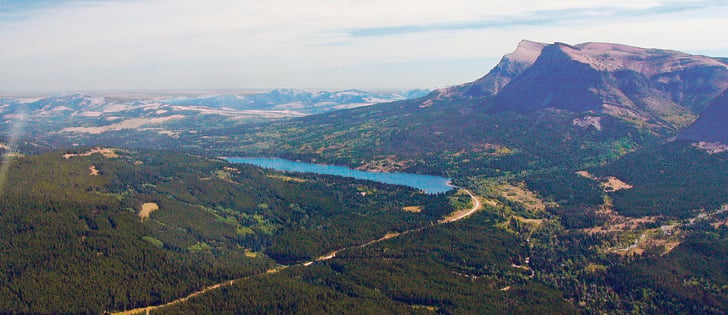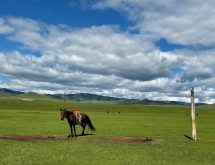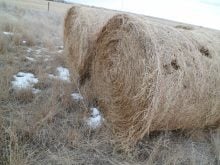Ranchers in southwestern Alberta say they want details on the future of grazing in the new Castle Provincial Park and Castle Wildland Provincial Park, an area where grazing leases have been held for a century in some cases.
The Alberta government finalized the boundaries of the two parks Jan. 20 at an announcement in Pincher Creek, Alta. Premier Rachel Notley said the parks, a combined area of 254,518 acres, will better protect the region where forestry, oil and gas, grazing and recreational pursuits have long been active.
Notley, along with Environment and Parks Minister Shannon Phillips, also announced a draft management plan for the region, which is open for a 60-day comment period ending March 20.
Read Also

Why feds imposed EV tariffs
Moe and Kinew have a fight on their hands when it comes to eliminating the EV tariff. Canada has to worry about pissing off the U.S. and Mexico and hundreds of thousands of auto workers.
Brent Barbero, a rancher and member of the Pincher Creek Stockman’s Association, said the draft plan indicates grazing will continue in the park.
“We’re happy we’re still there but we’re a little concerned about what the future might hold,” he said a few days after the announcement.
Parts of the plan calling for greater protection of riparian areas and reduced conflict between cattle and recreational users will need to be articulated, he said.
Ranchers use some of the area now designated as park for summer grazing, and pay a lease fee for doing so. Members of the Pincher Creek group are allotted 3,109 animal unit months (AUMs) in the north end of the Castle forestry region. That will accommodate about 1,000 cow-calf pairs from June to October.
The Twin Butte group has permits for 1,758 AUMs and independent holders have permits for another 1,058 AUMs.
“It’s very important to us and to a lot of my friends and neighbours,” Barbero said.
Leonard McGlynn, a rancher and Twin Butte Stock Association member, said he also wants details on government intentions.
The area now designated as park has many streams and springs, as well as rivers, and it likely won’t be practical or even possible to fence them all off from cattle, if in fact that is the plan.
“It will get so the cattle producers won’t be able to afford to be in there. It will be just too expensive.”
However, he and fellow association member Darryl Carlson said they were pleased that the draft plan acknowledges the role cattle play in protecting biodiversity and keeping grass under control so it doesn’t become a fire hazard.
“Cattle enhance that grass,” said McGlynn.
“If they don’t have cattle in there to control some of the grass, they’re going to get such a fuel load in the bottom of those trees that if a fire ever starts up there, it will be im-possible to stop.”
The 150-page draft plan’s section on grazing makes note of livestock’s role in range management including weed control and limiting forest encroachment.
It also says “existing grazing and range management practices will be reviewed and an updated grazing management strategy will be developed that incorporates protected areas values.”
In an e-mailed response to questions, Phillips’ department said the government “recognizes ranchers and off-highway vehicle users, many of whom have played important roles in conservation and stewardship.”
It said protection of sensitive areas may require fencing, off-stream watering and range riding.
“Over time, we will work with ranchers to find sensible and fair ways to protect areas bordering on rivers and streams, without causing an undue burden.”
Consultations on the plan have been underway for more than a year, the department added, and among those consulted were the Rocky Mountain Forest Range Association, the Pincher Creek Stockmen’s Association, the Twin Butte Stockman’s Association, the Alberta Grazing Lease Association, the Alberta Off-Highway Vehicle Association, the Alberta Snowmobile Association and the Alberta TrailNet Society.
Recreational off-highway vehicle users have been vocal in their objections to planned restrictions on motorized use.
Under the plan, illegal trails will be closed and off-highway vehicles will be “transitioned” out of the new Castle park area.
McGlynn and Barbero said the Castle region needs more protection from off-highway vehicle use because it has become excessive and in some cases damaging in recent years when users didn’t keep to designated trails.
The draft plan can be found at talkaep.alberta.ca/CastleManagementPlan.
















